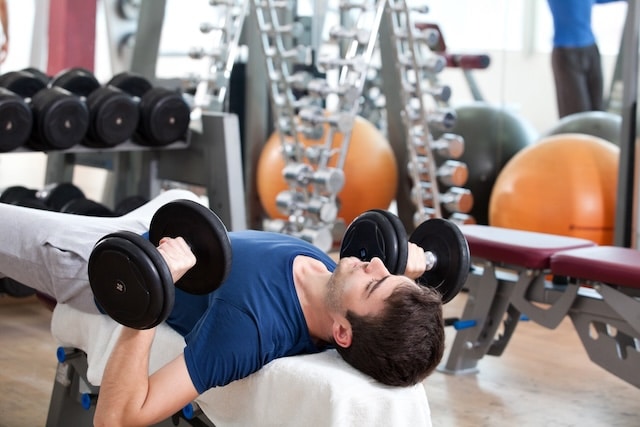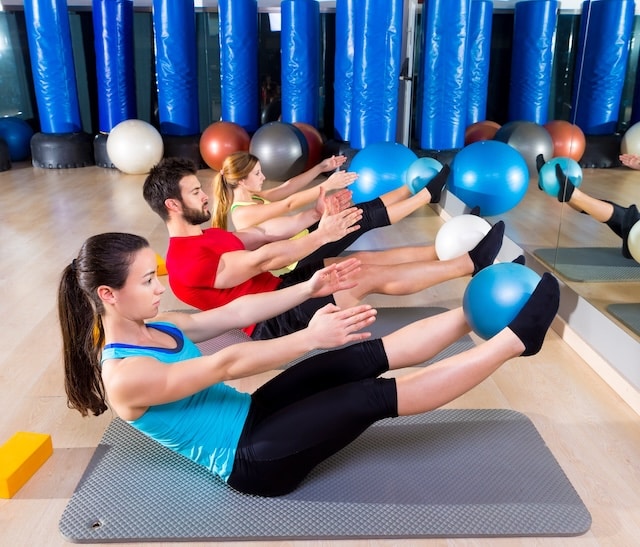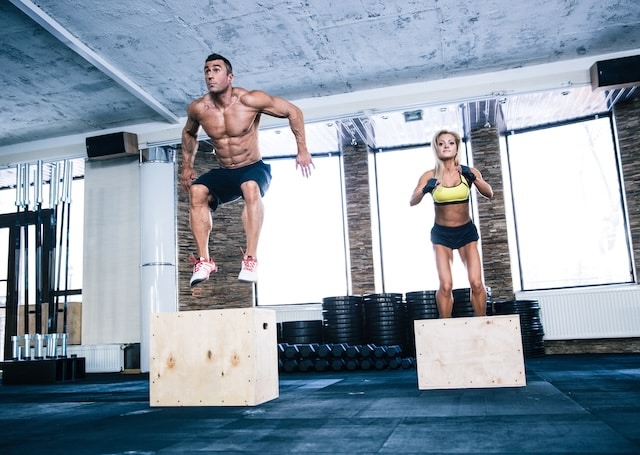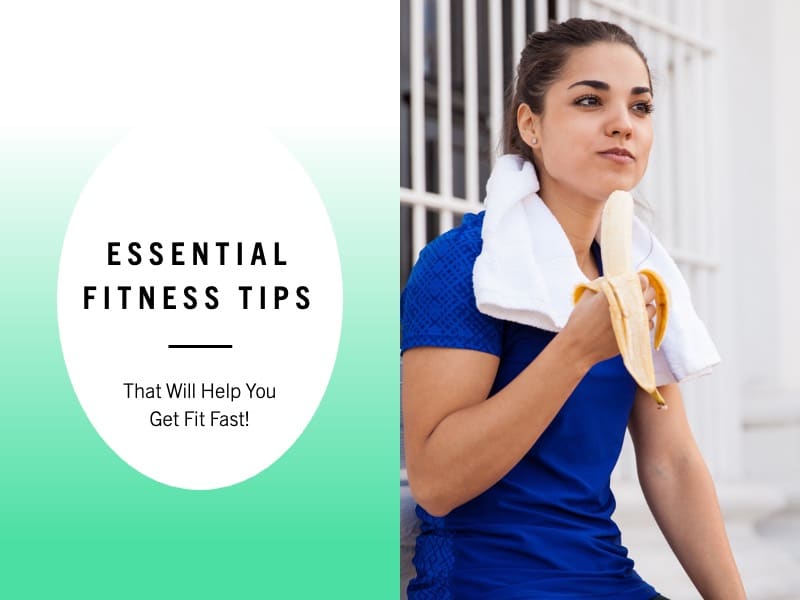Essential Fitness Tips That Will Help You Get in Shape Fast!
If you want to learn the essential fitness tips I’ve discovered through years of professional training, helping you maximize results and get in shape quickly without sacrificing long-term health, you want to read this whole article.
Getting fit fast requires a blend of dedication, strategy, and the right mindset—something I’ve learned firsthand throughout my ten years as a professional basketball player.
Throughout my basketball career, I’ve always faced challenges with my fitness and body composition, largely due to my struggle with exercise-induced asthma. Even from a young age, staying in shape felt like an uphill battle, as asthma often made it difficult for me to keep up with intense physical activity.
Despite these setbacks, I knew that improving my fitness was crucial to competing at a high level. Over the years, I experimented with countless training methods—strength training, cardio adaptations, and recovery techniques—slowly discovering what worked best for me.
Each season brought new lessons and helped me not only manage my asthma but also develop the fitness needed to thrive as a professional basketball player. Today, these hard-earned insights form the foundation of how I approach fitness, and they can help you overcome your own obstacles to get in shape fast!
How Do You Know If You Are Fit?

Determining whether you’re “fit” is a subjective and individualized process. Fitness isn’t a one-size-fits-all measurement, and the standards for fitness vary depending on your goals, lifestyle, and physical needs.
However, there are several key indicators you can use to evaluate your overall fitness level. These benchmarks can provide insights into your strength, endurance, flexibility, and overall well-being.
Cardiovascular Endurance
One of the clearest signs of fitness is your cardiovascular endurance, which refers to how well your heart and lungs can supply oxygen during sustained physical activity. You can gauge your cardiovascular endurance through exercises like running, cycling, or swimming.
How to assess:
- Can you comfortably run or jog for at least 20-30 minutes without excessive fatigue or breathlessness?
- Do you recover quickly after exertion, with your heart rate returning to normal within a few minutes after exercise?
- Can you maintain steady breathing during moderate-intensity cardio exercises?
If you struggle with these activities, improving your aerobic capacity may help you reach a higher level of fitness.
Muscular Strength and Endurance
Strength and endurance in your muscles are fundamental aspects of fitness. Muscular strength refers to the ability to exert force, while endurance is the ability to sustain activity over time. Both are essential for everyday tasks and overall health.
How to assess:
- Can you perform multiple sets of push-ups, squats, or lunges without losing form?
- Are you able to lift weights that challenge you, but don’t result in immediate fatigue or injury?
- Do you experience improvements in strength, such as increasing the weight you lift or the number of repetitions over time?
A well-rounded fitness level includes not only strong muscles but also the ability to use them efficiently over time.
Flexibility and Mobility
Flexibility refers to the range of motion in your muscles and joints, while mobility is the ability to move freely without pain or stiffness. Both are critical for injury prevention and overall physical functionality.
How to assess:
- Can you touch your toes or perform basic stretches without discomfort?
- Are you able to move through a full range of motion during exercises like squats or lunges?
- Do you feel mobile and flexible in your daily activities, such as bending, twisting, and reaching?
Maintaining flexibility and mobility is especially important for aging and avoiding injury during physical activities.
Body Composition
Body composition refers to the proportion of fat, muscle, bone, and water in your body. While body weight alone doesn’t determine fitness, body composition offers a clearer picture of health and fitness levels.
How to assess:
- Are your clothes fitting comfortably, and do you feel good about your body shape and size?
- Have you achieved or are you maintaining a healthy body fat percentage relative to your goals?
- Are you focused on building muscle or reducing fat in a sustainable and healthy way?
Keep in mind that everyone’s ideal body composition varies based on personal goals and genetic factors, and body composition is just one aspect of fitness.
Resting Heart Rate and Recovery
Your resting heart rate (RHR) is a strong indicator of cardiovascular health. A lower resting heart rate typically suggests that your heart is functioning efficiently and doesn’t need to work as hard to maintain bodily functions.
How to assess:
- Is your resting heart rate between 60-100 beats per minute? For highly trained athletes, it might be as low as 40-60 bpm.
- After intense exercise, does your heart rate return to its resting rate within a few minutes?
A rapid recovery rate indicates that your cardiovascular system is strong and capable of handling physical stress effectively.
Mental Fitness and Well-Being
Fitness isn’t just about physical performance. Mental health and emotional well-being are critical components of overall fitness. Regular exercise can improve mood, reduce stress, and enhance cognitive function.
How to assess:
- Do you feel mentally sharp, energized, and positive after working out?
- Is exercise a consistent part of your routine, helping you manage stress and anxiety?
- Do you feel more focused and productive in your daily life?
Being mentally fit includes having the emotional resilience to manage stress and maintain a healthy balance in life.
Functional Fitness
Functional fitness refers to your ability to perform everyday activities with ease. This includes activities like carrying groceries, climbing stairs, or playing with your kids.
How to assess:
- Can you perform daily tasks without experiencing fatigue or difficulty?
- Are you able to lift, bend, push, and pull in ways that are required for daily life without feeling strained?
If you can perform daily tasks with ease and without pain, you’re likely in good functional shape.
Balance and Coordination
Good balance and coordination are signs of overall fitness, as they reflect your body’s ability to control movement and avoid injury.
How to assess:
- Can you stand on one leg for at least 30 seconds without losing balance?
- Do you feel coordinated when performing exercises or participating in sports?
Improving balance and coordination will help prevent falls and improve overall body control.
How to Get Fit Fast!

Getting fit fast requires a strategic and efficient approach, combining the right mix of workouts, nutrition, and consistency. While there’s no magic solution for overnight results, implementing proven methods used by professional athletes can help you accelerate your progress and achieve your fitness goals more quickly.
From high-intensity training to smart recovery practices, learning how to optimize your workouts and lifestyle will allow you to maximize gains in a short time.
Whether you’re just starting out or looking to level up your routine, the tips below will guide you on how to get fit fast without sacrificing sustainability or overall health.
1.) Prioritize Strength Training
Contrary to the common myth that cardio is the only way to lose fat and get in shape fast, strength training is equally, if not more, important.
Strength training builds lean muscle mass, which increases your metabolism, helping you burn calories even when you’re not working out.
Athletes use compound exercises like squats, deadlifts, lunges, and push-ups because these movements engage multiple muscle groups simultaneously. This efficiency allows them to build strength and endurance without spending countless hours in the gym.
More muscle mass not only makes you stronger but also significantly aids in fat loss by improving metabolic rate.
For those new to strength training, starting with bodyweight exercises and gradually incorporating resistance through dumbbells or kettlebells is a great way to ease into the routine. Focus on form first, and then increase intensity by adding weight or increasing the number of sets.
2.) Incorporate High-Intensity Interval Training (HIIT)

High-Intensity Interval Training (HIIT) has become a popular workout method for both athletes and fitness enthusiasts. HIIT involves alternating between short bursts of intense activity and periods of low-intensity recovery or rest.
These sessions typically last between 15-30 minutes, but the benefits are long-lasting, making HIIT one of the most efficient ways to burn fat and boost cardiovascular health.
Athletes frequently use HIIT to improve endurance and conditioning without the lengthy time commitment of traditional cardio. HIIT also boosts metabolism for hours after your workout, a phenomenon known as excess post-exercise oxygen consumption (EPOC).
This means you’ll continue burning calories long after your workout is done.
For beginners, a sample HIIT workout might involve 20 seconds of sprinting followed by 40 seconds of walking or slow jogging. Repeat this for 10-15 minutes to start, gradually increasing the intensity as your fitness improves.
My go-to HIIT workout is Tabata Interval Workouts, a fast-paced routine that consists of 8 intense rounds of 20 seconds of all-out effort followed by 10 seconds of rest. This method packs a powerful punch in a short amount of time, making it one of the most efficient ways to boost both endurance and fat burning.
You can also perform HIIT with calisthenic exercises like burpees, mountain climbers, or jumping jacks.
3.) Do Your Aerobic Cardio
While HIIT is fantastic for burning fat in a short time, low-intensity steady-state cardio (LISS) has its own set of benefits that can’t be ignored. Professional athletes like myself balance both HIIT and LISS to ensure their bodies stay well-rounded and conditioned.
LISS includes cardiovascular workouts like brisk walking, jogging, cycling, or swimming. While not as intense as HIIT, LISS can be sustained for longer periods, which promotes endurance, fat burning, and overall cardiovascular health.
Low-intensity cardio is a great way to enhance your heart health, improve circulation, and support recovery between intense strength training or HIIT sessions.
Many athletes, including myself, also use steady-state cardio as an active recovery method, which can keep the body moving without causing too much strain.
Incorporating 2-3 sessions of LISS each week can make a significant difference in your fitness progress.
Whether you prefer walking on a treadmill, jogging in the park, or going for a long bike ride, consistent low-intensity cardio will help you build endurance and complement your strength training for overall fitness improvement.
4.) Increase Your NEAT
From my experience, increasing NEAT is the easiest way to improve your health and fitness.
Non-Exercise Activity Thermogenesis (NEAT) refers to the calories burned through everyday activities that aren’t structured exercise, such as walking, standing, or even fidgeting. While NEAT might seem trivial, it plays a major role in how many calories you burn throughout the day, especially for professional athletes who remain active outside their formal training routines.
Athletes understand the importance of staying active throughout the day and not relying solely on workout sessions for calorie burning. Simple actions like taking the stairs instead of the elevator, walking to the grocery store, or standing while working can increase your daily energy expenditure significantly.
Increasing NEAT helps you burn calories continuously, which is especially important for those who have desk jobs or lead sedentary lifestyles outside of the gym.
To increase your NEAT, try setting reminders to stand up and stretch every hour, take short walks during breaks, or park your car further away from your destination. These small changes can add up over time, helping you burn more calories and stay more active overall.
5.) Focus on Nutrition for Faster Results

You’ve probably heard the saying, “Abs are made in the kitchen.” While exercise is crucial, what you eat plays an even more significant role in your ability to get in shape fast.
Professional athletes treat food as fuel, ensuring they consume the right nutrients to support performance, recovery, and overall health. Their diets are balanced, focusing on macronutrients like protein, carbohydrates, and healthy fats.
You can still eat food for enjoyment, but if you want to get fit fast, focusing on your nutrition will make achieving your goals much easier!
A simple approach to nutrition is to focus on whole foods.
Protein is essential for muscle repair and growth. After a challenging workout, your muscles need amino acids from protein to recover and get stronger.
Carbohydrates are your body’s main source of energy, especially during high-intensity workouts.
Meanwhile, healthy fats support hormone production and help your body absorb essential vitamins.
Incorporate lean protein sources like chicken, fish, and legumes, along with complex carbohydrates like quinoa, oats, and sweet potatoes.
Don’t forget healthy fats from foods like avocados, nuts, and olive oil.
Hydration is also key—athletes drink plenty of water throughout the day to maintain performance and prevent fatigue.
Meal planning is another strategy athletes use to stay on track. Prepare balanced meals and snacks ahead of time to avoid reaching for unhealthy options when you’re hungry.
6.) Prioritize Recovery and Sleep
One of the most overlooked aspects of fitness is recovery. Professional athletes understand that muscles don’t grow in the gym; they grow when you rest. Recovery is essential for preventing injuries, reducing fatigue, and improving performance.
This includes activities like stretching, foam rolling, and massage therapy to release tension and improve mobility.
Sleep is equally critical. During sleep, your body goes into repair mode, releasing growth hormones that help repair and build muscle tissue. Inadequate sleep impairs recovery, weakens your immune system, and reduces your ability to perform in the gym.
Aim for 7-9 hours of sleep per night to ensure optimal recovery. Incorporate rest days into your training routine to allow your muscles to heal.
Athletes often use active recovery methods like light yoga, swimming, or walking to promote blood flow and reduce stiffness.
7.) Stay Consistent and Track Your Progress
One of the biggest challenges for people trying to get in shape is consistency. Pro athletes are disciplined and consistent in their training because they understand that fitness is a long-term commitment. Skipping workouts or making excuses won’t get you to your goal any faster.
Tracking your progress is a great way to stay motivated. Professional athletes log their workouts, track their strength gains, and monitor changes in body composition to stay on target. You can do this by using a fitness app, keeping a journal, or even taking weekly photos to measure progress.
Set small, achievable goals that build towards your bigger objective.
If you want to lose weight, set weekly targets for calorie intake or exercise sessions. If you’re trying to build muscle, monitor how much weight you’re lifting and aim for gradual increases.
8.) Use Proper Technique to Maximize Gains
Probably the biggest lesson I have learned throughout my career in athletics, health, and fitness is that technique and form are the most important aspects of long-term progress.
When it comes to lifting weights or doing any form of exercise, proper technique should always come before intensity. Pro athletes know that lifting with poor form is a fast track to injury, which can set them back weeks or even months.
Correct form ensures that you’re targeting the right muscles and maximizing the benefits of each exercise. It also prevents strain on your joints and tendons, reducing the risk of injury.
For example, squatting with your knees properly aligned and keeping your back straight is crucial for preventing lower back pain and knee issues.
If you’re unsure about your form, consider working with a personal trainer or recording yourself while exercising. A mirror can also help you check your posture and alignment during strength exercises.
9.) Stay Mentally Focused and Motivated
Physical fitness isn’t just about training your body—it’s also about training your mind. Professional athletes rely on mental toughness and motivation to push through hard days, stay disciplined, and maintain their drive toward long-term goals.
One key technique athletes use is goal-setting. Set clear, specific goals that are challenging yet attainable (SMART Goals).
Whether it’s running a certain distance, lifting a certain weight, or losing a set amount of body fat, having a target keeps you motivated.
Visualization is another tool athletes use. Before a big game or event, athletes mentally rehearse their performance, visualizing every movement and feeling. You can use this technique to visualize your success, whether it’s finishing a tough workout or hitting a fitness milestone.
Staying positive is also critical. Fitness is a journey, and it’s easy to get discouraged when results don’t come as quickly as expected. Focus on your progress, no matter how small, and remind yourself why you started in the first place.
If you’re ready to kickstart your fitness journey and need some extra guidance, my book offers expert insights to help you reach your goals faster. You can also jumpstart your results with my 7-day detox plan, designed to reset your body and establish healthy habits for long-term success.
Grab your copy today and take the first step toward becoming the best version of yourself!



